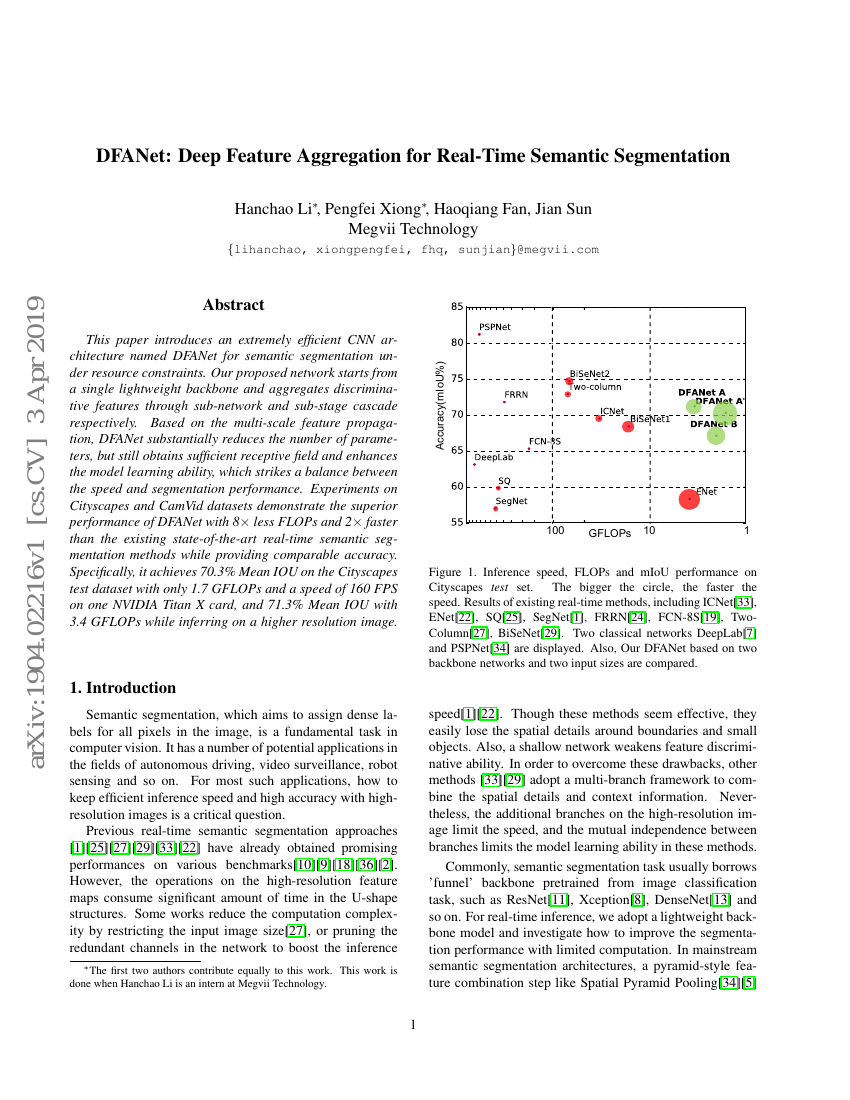Command Palette
Search for a command to run...
Hanchao Li; Pengfei Xiong; Haoqiang Fan; Jian Sun

Abstract
This paper introduces an extremely efficient CNN architecture named DFANet for semantic segmentation under resource constraints. Our proposed network starts from a single lightweight backbone and aggregates discriminative features through sub-network and sub-stage cascade respectively. Based on the multi-scale feature propagation, DFANet substantially reduces the number of parameters, but still obtains sufficient receptive field and enhances the model learning ability, which strikes a balance between the speed and segmentation performance. Experiments on Cityscapes and CamVid datasets demonstrate the superior performance of DFANet with 8$\times$ less FLOPs and 2$\times$ faster than the existing state-of-the-art real-time semantic segmentation methods while providing comparable accuracy. Specifically, it achieves 70.3\% Mean IOU on the Cityscapes test dataset with only 1.7 GFLOPs and a speed of 160 FPS on one NVIDIA Titan X card, and 71.3\% Mean IOU with 3.4 GFLOPs while inferring on a higher resolution image.
Code Repositories
Benchmarks
| Benchmark | Methodology | Metrics |
|---|---|---|
| semantic-segmentation-on-camvid | DFANet A | Mean IoU: 64.7% |
| semantic-segmentation-on-cityscapes | DFANet A | Mean IoU (class): 71.3% |
| smac-on-smac-def-infantry-parallel | DIQL | Median Win Rate: 45.0 |
Build AI with AI
From idea to launch — accelerate your AI development with free AI co-coding, out-of-the-box environment and best price of GPUs.